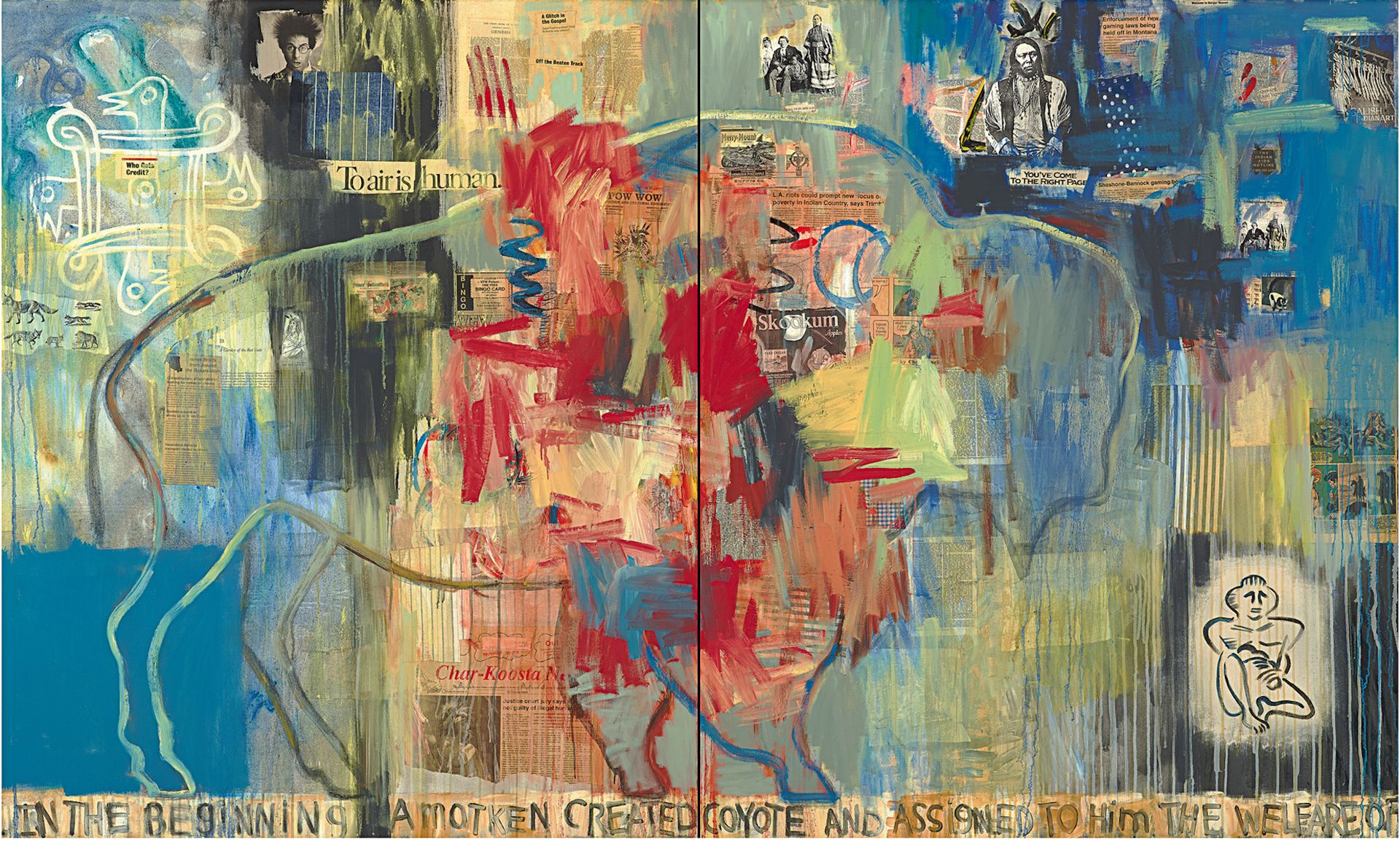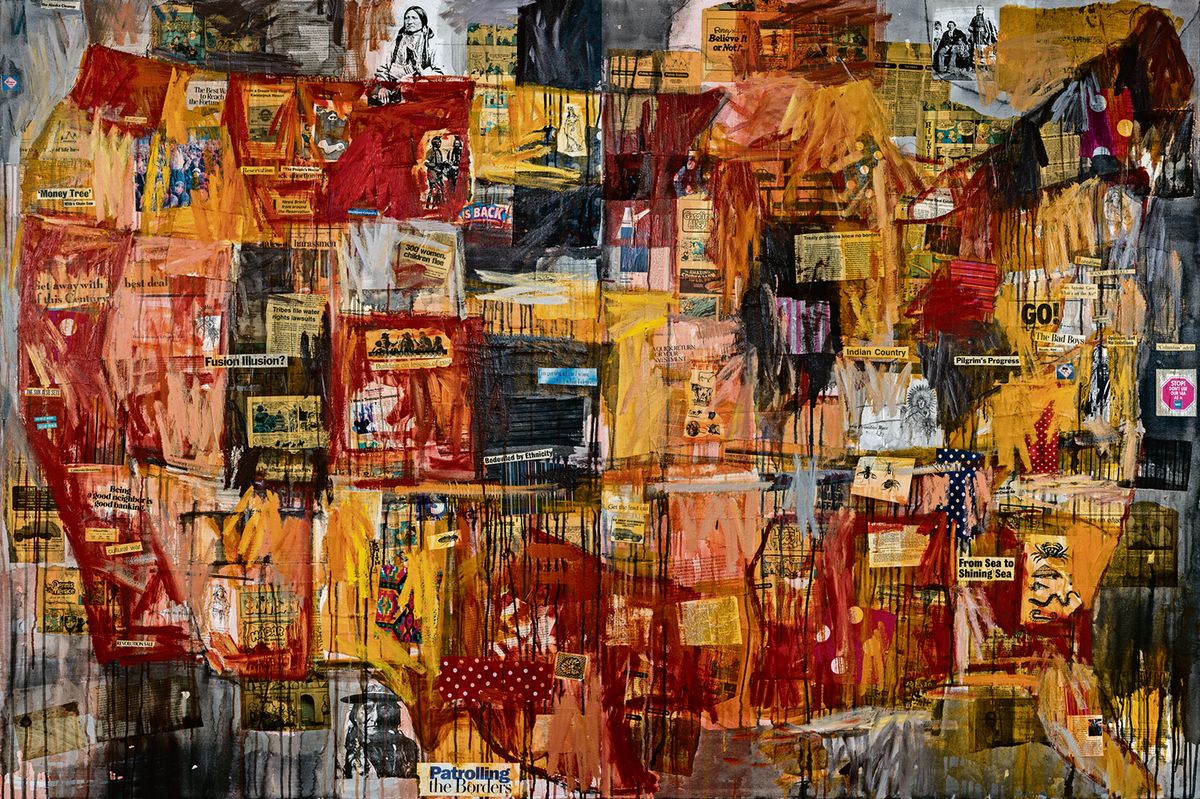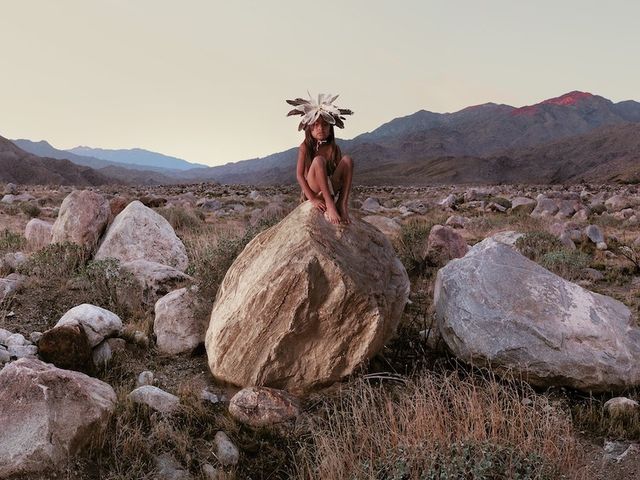The latest retrospective at the Whitney Museum of American Art features works evoking artists that the institution has championed for decades. There are canvases repurposing advertising iconography in a manner similar to Andy Warhol. There are paintings structured around the map and flag of the United States that evoke Jasper Johns. And there are mixed-media works incorporating newspaper clippings and other printed imagery that call up the collage aesthetic of Robert Rauschenberg. They are all by Jaune Quick-to-See Smith, an artist and activist who is a citizen of the Confederated Salish and Kootenai Nation, whose retrospective is the first by a Native American artist that the Whitney has organised since it opened 92 years ago. It comes at a moment of reckoning and institutional self-reflection for US museums.
“The most important thing that happened was Black Lives Matter, George Floyd and Standing Rock—that began to shake some of the institutions in this country and rattle their cages,” Smith says. “It was clear that there was an underbelly to this country that wasn’t happy with the way things are.”
Curated by Laura Phipps, an assistant curator at the Whitney, Memory Map brings together more than 100 paintings, sculptures, prints and drawings made during the course of nearly five decades. Appropriately, pride of place in the exhibition is given to Indian Map (1992), Smith’s first painting structured around the US map.
The mystic and the Modernist: Hilma af Klint and Piet Mondrian
“I began with the premise that the map didn’t belong to Jasper Johns, the map was an abstract image of stolen land in this country, so how could I turn the map into a new story?” the artist says. “I had a real struggle with that.”
Smith layered the canvas with fragments of newspaper headlines, whole articles, advertisements and more. The broiling composition is dominated by thick strokes of red, orange and pink that evoke smeared blood but also petroglyphs like those near Smith’s home in Albuquerque, New Mexico. The composition is punctuated by collaged photographs of Native Americans taken by the ethnologist Edward Curtis, who helped spread images and an idea of his sitters as historical subjects of a bygone era.

Jaune Quick-to-See Smith, Genesis, 1993. High Museum of Art, Atlanta; purchase with funds provided by AT&T NEW ART/NEW VISIONS and with funds from Alfred Austell Thornton in memory of Leila Austell Thornton and Albert Edward Thornton, Sr., and Sarah Miller Venable and William Hoyt Venable. © Jaune Quick-to-See Smith. Photograph courtesy the artist and Garth Greenan Gallery, New York
Throughout the exhibition, Smith works to resist Euro-American narratives and stereotypes about Native Americans, often relying on satire and humour. Her 1994 lithograph Modern Times, for instance, appropriates an industrial apple grower’s logo—an icon of a generic Indigenous figure wearing a colourful, feathered headdress—and affixes it to the body of a man in a business suit. Indigenous people are complex and contemporary individuals living today, the work slyly asserts, not static signifiers of old history.
For Smith, the colonisation of the Americas, systemic mistreatment of Indigenous people and people of colour, and the destruction of the environment are all linked, and some of the largest paintings in the show bring all these themes together with great force. Among them is Trade Canoe for the North Pole (2017), a 13ft-wide painting of a canoe navigating icy-blue waters. On board are three palm trees, fragments of drawings and collaged elements including some of Smith’s distinctive animal characters such as buffalo and coyote. Near the bow of the canoe, a collaged newspaper clipping issues a stark warning: “Listen up humans.”
- Jaune Quick-to-See Smith: Memory Map, Until 13 August, Whitney Museum of American Art, New York




